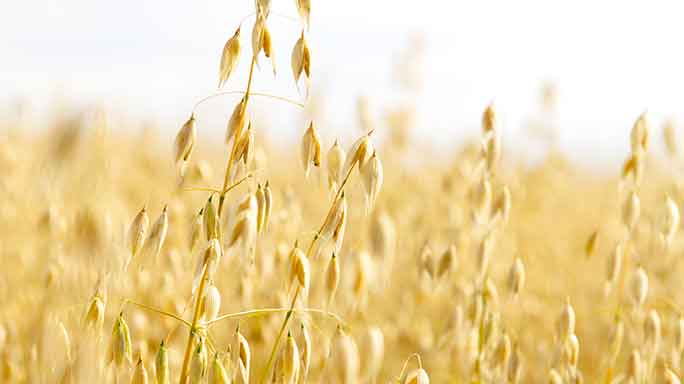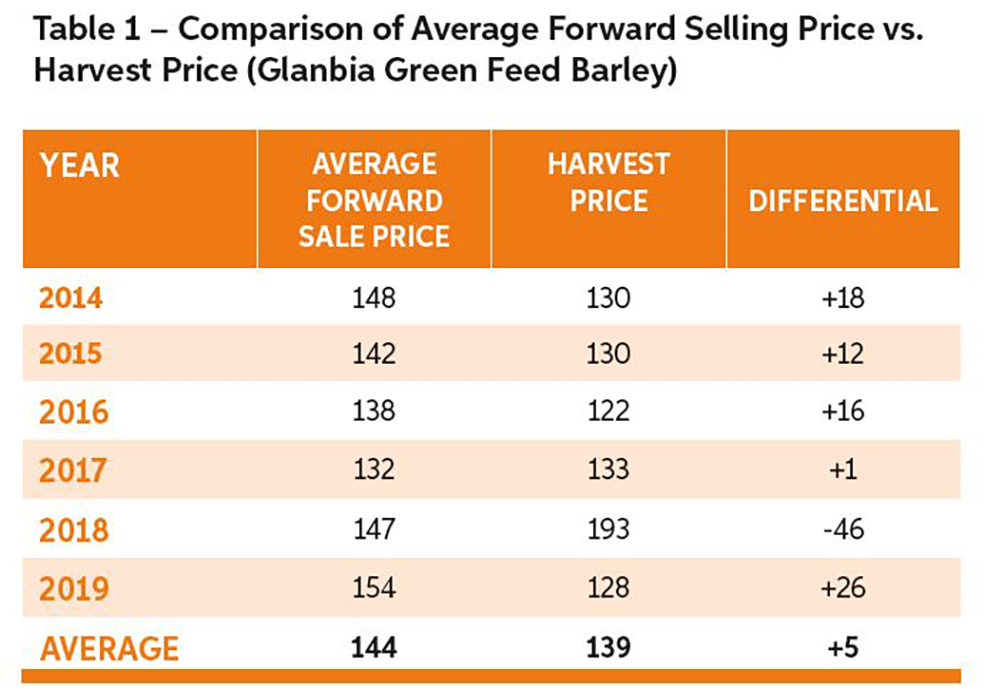Forward selling of grain – Don’t miss an opportunity

Forward selling of grain is a perennial subject of discussion. A significant number of growers now see it as a consistent way of managing risk and locking in a profit on some portion of their crop at least.
However, many growers still see forward selling as a something of a gamble, afraid of losing out if prices were to rise after any forward deal was done. In reality though, selling all their grain at harvest is generally a bigger gamble for any individual grower, as history shows that prices are most often at their lowest during the harvest. This is borne out by the graph in Figure 1 below, showing the MATIF wheat index from 2015 to 2020. Only in years when there is a severe disruption to grain production caused by drought, excess rainfall, etc; are prices likely to rise through harvest, as was the case in 2018. In the majority of years, a plentiful supply of grain forces prices down as handling and storage capacity come under pressure and buyers rather than sellers are in control of the market.

Further evidence of the benefits of forward selling is demonstrated in Table 1 below, which shows the average price achieved by Glanbia growers for forward sales of green feed barley compared to the announced Glanbia harvest price for the same crop over the past six years. While the overall difference across this period might look small at €5 per tonne, it is important to focus on the fact that forward selling returned a positive benefit in five out of the six years; it is worth noting also that in 2018, the quantity of grain forward sold was very small as it became obvious several months in advance of harvest that global grain production was going to be much reduced (due to a European drought) and that prices would rise significantly into harvest.

In any particular harvest year, there are generally some opportunities for forward selling in advance of harvest. Any disruption to supply, either perceived or real, is likely to cause a positive market reaction, resulting in a “spike” in price. Generally, these spike are short-lived and growers must be ready to take advantage of them, if and when they arise. Some key pieces of information that every grower should be aware of in relation to making a decision on forward selling are as follows:
1. Know the cost of production for every crop grown on farm.
This will allow the grower to know what price is needed to break even at average yields. If this price is available, then the grower can decide, based on market and crop outlook whether they should sell or hold. Recent experiences have shown that it has generally been sensible to sell some portion of the crop once break-even price is achievable, particularly for growers with large volumes.
2. Do not wait for “benchmark” prices.
Many growers have missed €148/t while waiting for €150/t and ended up selling at a significantly lower price. If a price looks reasonable, sell some portion of the crop; if the price continues to rise, sell another portion.
3. Spread sales across the growing season.
It is the average price achieved for grain that counts at the end of the crop year rather than the price in any individual sale. By selling a number of times rather than guessing that a market may have peaked at a particular point in time, the average price is more likely to be higher. If a price looks particularly attractive, a grower may decide to sell a larger portion of their crop.
4. Sell and move on!
Once the grower believes that they are making the right decision at the time of any sale, then it remains the right decision, regardless of what happens later.Glanbia will continue to send out text messages with green price offers, at least once per week, up to the beginning of harvest. If you are not already availing of this service and wish to do so, please contact your business manager.
You can view the 2020 Spring Agronomy Update Brochure here
First Published 9 April 2020
Tagged with: Tillage
